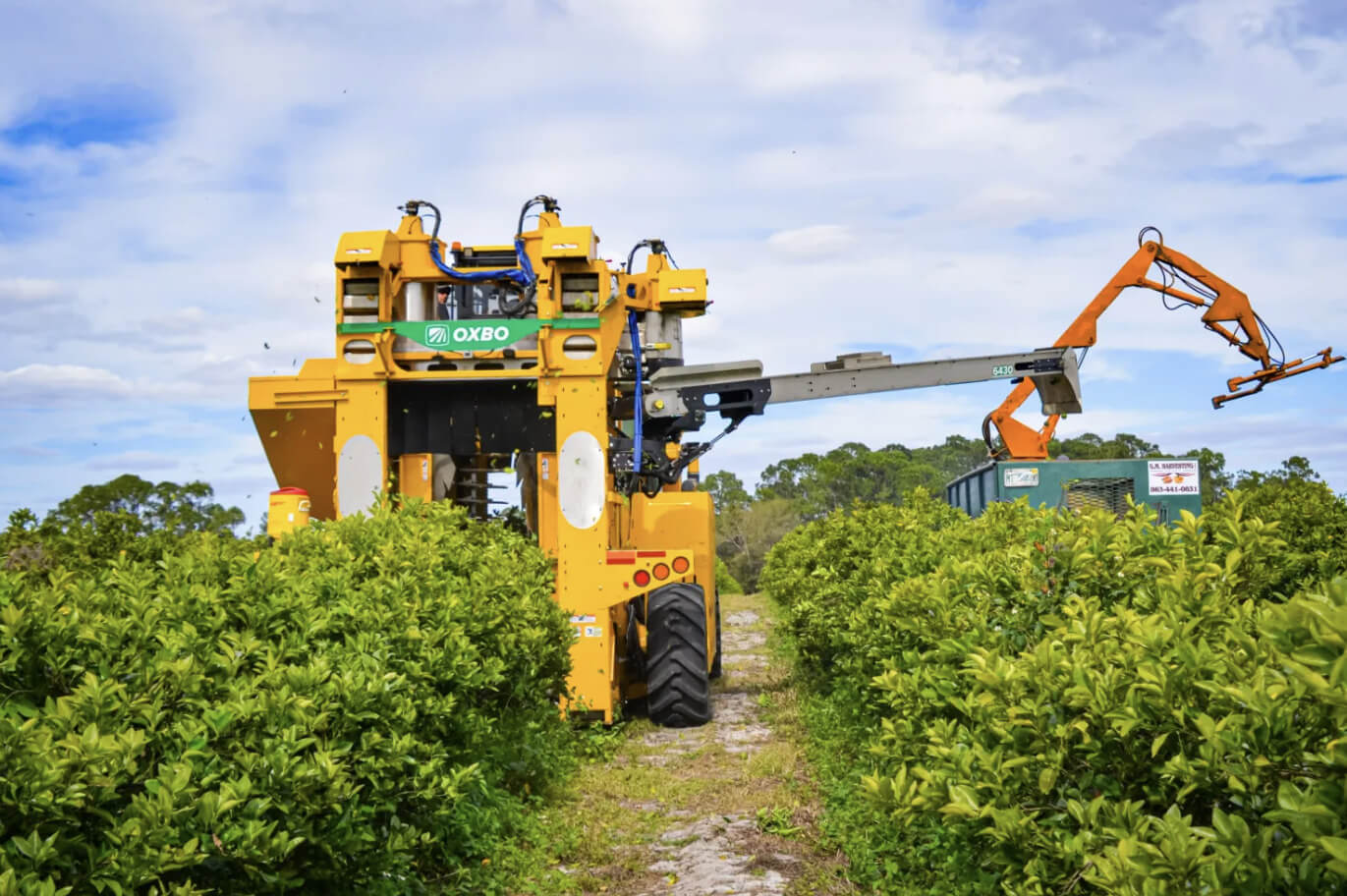Citrus in Super High Density
SHD Citrus Crops
At Agromillora we address the increasing interest of companies in the sector towards the super high density culture of citrus fruits. Thanks to our extensive experience in this agronomic model applied to other species, we are defining a system adapted to citrus trees.

The first experimental and commercial Super High Density citrus plantations were established ten years ago in Spain and are now found in other countries such as Brazil and the United States.

Traditionally, citrus cultivation (both for industry and the fresh produce market) was done with very large trees, manual pruning, and a planting distance of 6 to 7 meters between rows and 4 to 5 meters between trees.

With the SHD model, the spacing is reduced to between 3.5m and 4m between rows and between 1.20m and 1.50m between trees.
The significant reduction in tree canopy volume leads to greater labor efficiency, particularly for harvesting when the destination is the fresh produce market.
The SHD Citrus Model proposal is based on specific objectives to meet the needs of both producers and the environment.
Objectives
- Reduction of the unproductive period through planting intensification.
- Minimal reliance on pruning and harvesting labor.
- Increased efficiency in the use of resources such as pesticides, water, and fertilizers.
- Adaptation of plantations to different productive options: manual harvesting for fresh consumption in domestic and export markets; mechanical harvesting when the fruit is destined for industry; or a combination of both options depending on seasonal prices.
Factors
- Correct choice of plant material: variety and rootstock. This is the most important factor due to the fruit's characteristics, flavor quality, and dual sustainability for fresh or industrial use, especially for early harvest varieties.
- Rootstocks play a key role due to their adaptation to biotic and abiotic stress, production, fruit quality, compatibility, and control of the variety's size.
- Size-controlling rootstocks: CIVAC-19 is a citrus rootstock from Agromillora in co-obtention with IVIA that provides naturally controlled vigor and good adaptation to a wide range of soils, especially heavier ones. Vigor control is key to having small-volume canopies that are easily mechanizable and efficient in light distribution within the canopy.
- Moreover, efficient resource use requires small, two-dimensional canopies.
- Other rootstocks tested in various terrains and used as references have been Forner Alcaide 5, Forner Alcaide 517, also disseminated by IVIA.
- The 1600 and 1711 rootstocks from the Cordeiropolis Citrus Center in Brazil and UFR-4, UFR-5, UFR-6, and UFR-17 from the University of Florida are also showing good results.
These dwarfing citrus rootstocks represent a true revolution in the citrus sector. For fruit intended for fresh consumption, harvesting is still manual, but the process is considerably more efficient with smaller trees.
This, the concept of pedestrian fields is born, where no ladders or platforms are needed for harvesting. Additionally, the format allows for mechanical pre-pruning and improves the application of phytosanitary products.
SHD training system Plantations with SHD management oriented towards a two-dimensional and small-volume training system.
- SHD plantations are based on reduced planting needs, resulting in smaller, two-dimensional canopies compared to traditional ones.
- SHD plantations are well adapted to mechanization of pruning and harvesting with straddle machines, but also for manual harvesting when necessary.
- SHD citrus is based on two-dimensional canopies formed by multiple branches that should effectively occupy the smaller assigned space.
Related news
Sustainability in citrus relies on productive intensification and the hedgerow model.
Sustainability in citrus relies on productive intensification and the hedgerow model. Genetic improvement, low-vigor trees, and high-density planting frames for sustainable production of citrus at both environmental and economic levels. Producing sustainably in a scenario with labor shortages, water scarcity, or significant pest and disease pressures is the main challenge faced by fruit and vegetable […]
Growing Citrus Under Protective Screen to fight HLB
Growing Citrus Under Protective Screen to fight HLB Florida, and its traditional citrus orchards, has been suffering the effects of a destructive bacterial disease for over a decade now. HLB (Huanglongbing), also known as ‘greening’, has devastated close to two-thirds of the citrus plantations that existed 20 years ago. In two decades, the area of […]
Field Day Features Mechanical Citrus Harvest
The recent field day showcased how technology might help citrus growers with two of their biggest challenges: sourcing labor and fighting HLB The event was held at Lost Lake Groves in Lake Placid, Florida, and featured machine harvest of citrus trees in an experimental super-high-density grove. The grove has 908 trees per acre and has […]
See Citrus Mechanical Harvesting in Action
See Citrus Mechanical Harvesting in Action Learn how new grove architecture could change the way you grow citrus If you ask growers what their top two challenges are, most will list citrus greening (also known as HLB) and sourcing affordable and reliable labor. On February 8th, a grove demonstration will be hosted that might help […]






